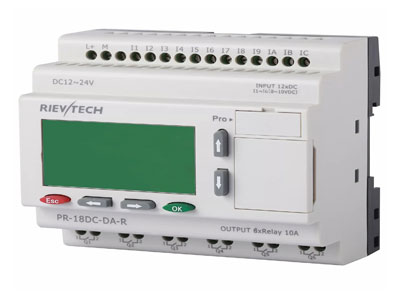Can Scada Work Without PLC?
Key Takeaway
SCADA can work without a PLC, but it is generally more effective when paired with one. SCADA (Supervisory Control and Data Acquisition) systems monitor and control industrial processes, while PLCs (Programmable Logic Controllers) execute the control functions. Without a PLC, SCADA systems rely on other controllers or direct control methods, which may limit automation capabilities and accuracy. Using SCADA with PLCs enhances automation, providing precise control, real-time data monitoring, and improved system reliability. This combination allows for more efficient and accurate industrial process management.
Understanding SCADA Systems
SCADA systems are centralized platforms vital for monitoring and controlling industrial processes. They collect real-time data from sensors, display it on a user-friendly interface, and enable operators to manage operations efficiently. Key features include:
Real-time Data Collection: SCADA systems gather data from sensors across facilities.
Graphical Interface: This interface, known as the Human-Machine Interface (HMI), presents data intuitively.
Remote Accessibility: Operators can monitor and control processes from control rooms or remote locations.
Control Capabilities: SCADA systems allow operators to issue commands and adjust settings to maintain optimal process conditions.
In essence, SCADA systems streamline operations, enhance productivity, and ensure safety in industrial environments.

Role of PLCs in SCADA Architecture
PLCs, or Programmable Logic Controllers, serve as the linchpin within SCADA (Supervisory Control and Data Acquisition) architectures, playing a pivotal role in the seamless operation of industrial processes. Acting as intermediaries between the myriad of field devices and the SCADA software, PLCs undertake multifaceted responsibilities.
These devices serve as the nerve center, receiving real-time input signals from an array of sensors strategically positioned across the industrial landscape. Upon receiving these inputs, PLCs swiftly execute predetermined control algorithms, meticulously crafted to optimize efficiency and ensure safety. Subsequently, they transmit meticulously calculated output signals to actuators, motors, and other control devices, orchestrating the precise orchestration of industrial machinery.
However, PLCs do not operate in isolation. They maintain constant communication with the SCADA system, facilitating the bidirectional flow of data essential for informed decision-making and dynamic process control. Through this symbiotic relationship, PLCs empower SCADA systems with the capability to monitor, analyze, and respond to real-time changes in industrial operations, thereby enhancing productivity, safety, and operational efficiency.
You May Like to Read
Alternatives to PLCs in SCADA Systems
While PLCs are widely employed in SCADA systems, alternative technologies like Remote Terminal Units (RTUs) and Distributed Control Systems (DCSs) offer viable options for fulfilling similar functions. RTUs, specifically engineered for remote monitoring and control applications, serve as effective alternatives to PLCs in scenarios where extensive field installations are required. These devices are designed to operate autonomously in remote locations, collecting data from sensors and executing control commands as directed by the central SCADA system.
On the other hand, DCSs represent a comprehensive control solution suitable for managing large-scale industrial processes. Unlike PLCs, which are typically deployed for discrete control applications, DCSs are adept at handling complex and interconnected systems found in industries such as oil and gas, power generation, and chemical manufacturing. With their integrated architecture and sophisticated control algorithms, DCSs offer seamless coordination and optimization of diverse process variables, making them an attractive alternative to PLC-centric SCADA architectures in certain industrial contexts.
Benefits and Limitations of SCADA Without PLCs
Operating SCADA systems without PLCs can offer certain benefits, particularly in terms of cost reduction and simplified system architecture. Without the need for PLCs, there are fewer hardware components to purchase, install, and maintain, potentially resulting in lower overall expenses for implementing and maintaining the SCADA infrastructure. Additionally, a SCADA system without PLCs may have a simpler architecture, which could make it easier to deploy and manage, especially in smaller-scale applications or environments with limited resources.
However, it’s important to acknowledge the limitations that come with operating SCADA without PLCs. One major drawback is the limited control capabilities compared to PLC-based SCADA systems. Without PLCs to execute control logic and automate processes, SCADA systems may rely more heavily on manual intervention for performing control actions. This reliance on manual control can lead to inefficiencies, slower response times, and increased risk of human error, particularly in dynamic industrial environments where rapid decision-making and precise control are critical for maintaining operational efficiency and safety. Therefore, while SCADA without PLCs may offer cost and simplicity advantages, it’s essential to carefully consider the trade-offs in terms of control capabilities and automation flexibility.
Integrating SCADA with Other Control Systems
Integrating SCADA with other control systems, such as PLCs, RTUs, and DCSs, is pivotal for enhancing overall system performance and functionality in industrial automation. This integration enables organizations to leverage the unique strengths of each technology, resulting in robust and scalable automation solutions that are tailored to meet specific operational requirements.
By seamlessly connecting SCADA systems with other control devices, data exchange between different components becomes more efficient and streamlined. This ensures improved interoperability and enables better coordination and synchronization of industrial processes. For example, SCADA systems can gather real-time data from PLCs and RTUs, allowing operators to monitor and analyze process variables and performance metrics comprehensively.
Moreover, integrating SCADA with PLCs, RTUs, and DCSs enhances control capabilities, providing operators with greater flexibility and control over industrial processes. This enables organizations to optimize production workflows, improve productivity, and respond more effectively to changing operational conditions or production demands.
In essence, integrating SCADA with other control systems empowers organizations to create more intelligent and responsive automation solutions that drive operational excellence and support business objectives effectively.
Conclusion
In conclusion, while SCADA systems can technically operate without PLCs, their interdependence is undeniable. PLCs play a vital role in enabling real-time control and automation within SCADA architectures, ensuring efficient and reliable operation of industrial processes. By understanding the relationship between SCADA and PLCs, engineers can design and deploy integrated automation solutions that maximize productivity and minimize downtime.
